Our Blog - Moissac, France
Moissac is known for a few things, but mostly for the Moissac grape (Chasselas) and the Benedictine Abbey. The Benedictine monastery was one of the most important religious communities of the Western Christian world during the Middle Ages. The Saint-Pierre Abbey Church and the Cloister are amazingly-well preserved.
In the 15th century, Moissac was already an important city in the area. The port on the Tarn River was very active, carrying various products to Bordeaux including wine and flour produced in the large local mills. It reached its peak in the 18th century and most of the large mansions on the main streets of the town center date from this period.
The French Revolution put an end to the life of the abbey and the end of the 19th century saw an upheaval in the traditional agriculture of the Moissac hillsides. The wine vines that had been planted here for centuries were replaced with Chasselas vines. Instead of being a wine grape, these are white table grapes (so for eating).
It was also one of the most impacted cities by the flood of March 1930 which devastated the entire South-West. In Moissac, 120 died and 1,400 houses were destroyed. One of the roads that we walked on was called the "Rue de l'Inondation de 1930".
On the outskirts of town is the Saint Martin church, one of the 5 oldest churches in France. It was built on a former Gallo-Roman bath belonging to a 3rd century villa. It was long believed that the church was built in the Merovingian period by transforming a Roman building located where the current choir is. The off-centered polygonal apse was added in the 9th century. However, the church has the exact plan of a spa in an ancient villa. The nave coincides with the frigidarium and the choir at the intersection of the tepidarium and the caldarium. Only an exterior picture as the church wasn't open.
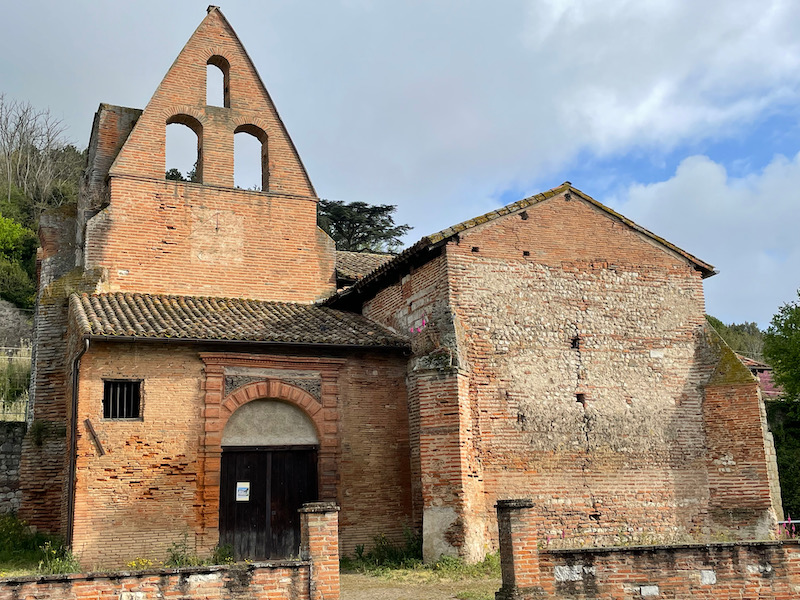
The current covered market in the middle of town is not the original one, which is next door. The older covered market is the brick building with the columns. Over the door is the saying "Don de la ville de Paris, 1930", which means "Donation from the city of Paris, 1930. Paris came to the aid of Moissac after 1930 flood.
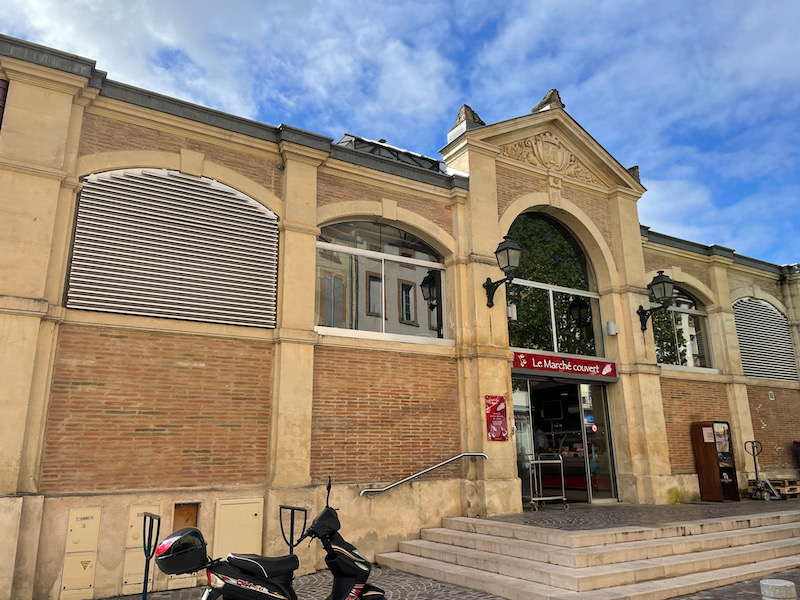
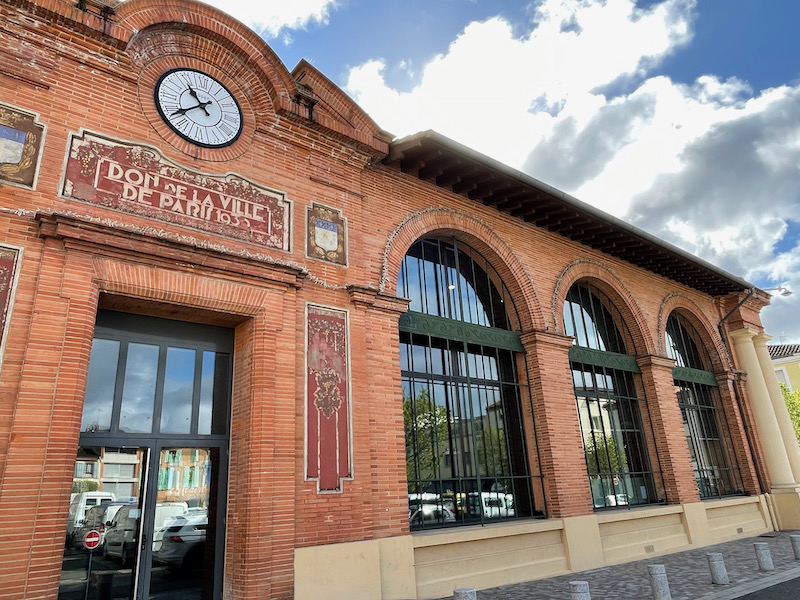
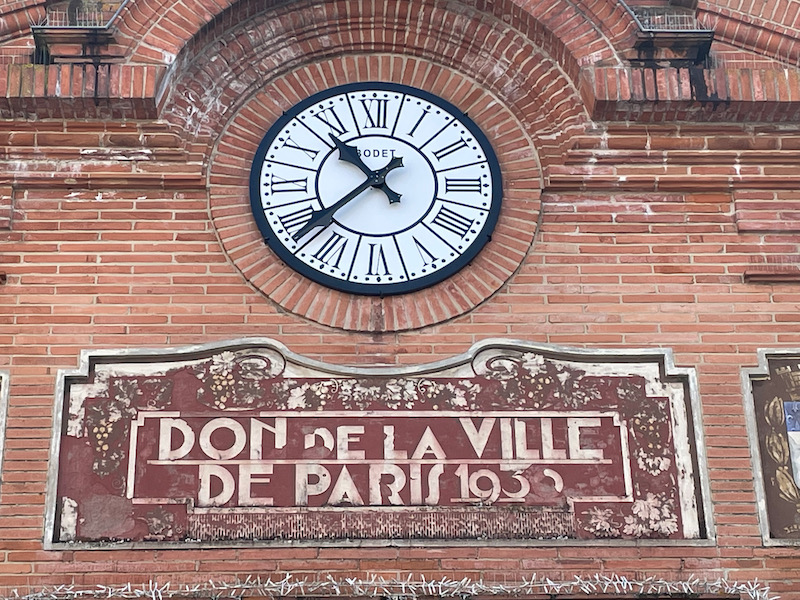
This ironwork is on a Chasselatier house. It has high gates going into the courtyard where carriages brought their cargo of Chasselas grapes. The workers would arrange them in basket, so that none of the stem was visible on the surface. The dome of golden grains signified the nobility of the product.
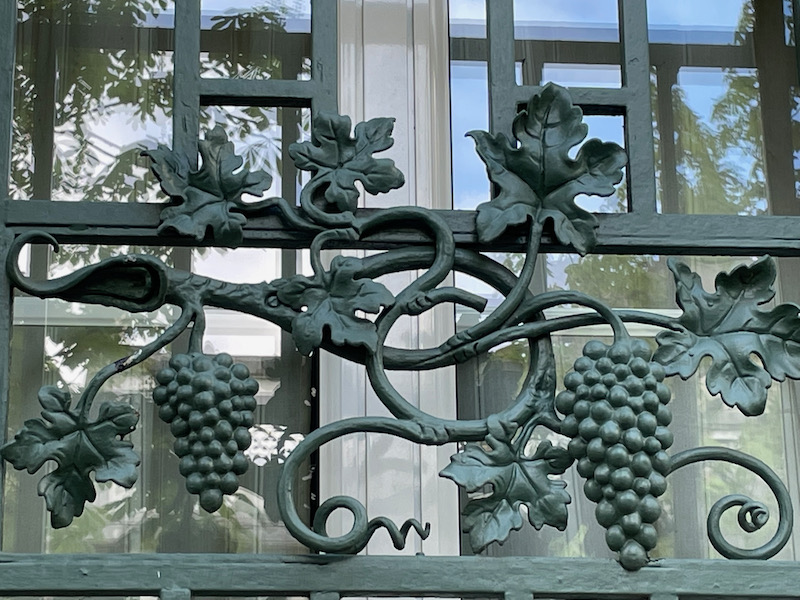
There are quite a few houses (from my reading, around 100) that were built in an Art Deco style. We took a little stroll and found a few Art Deco elements: brick ornaments, patterned of ironwork, juxtaposed materials. Here are a couple examples.
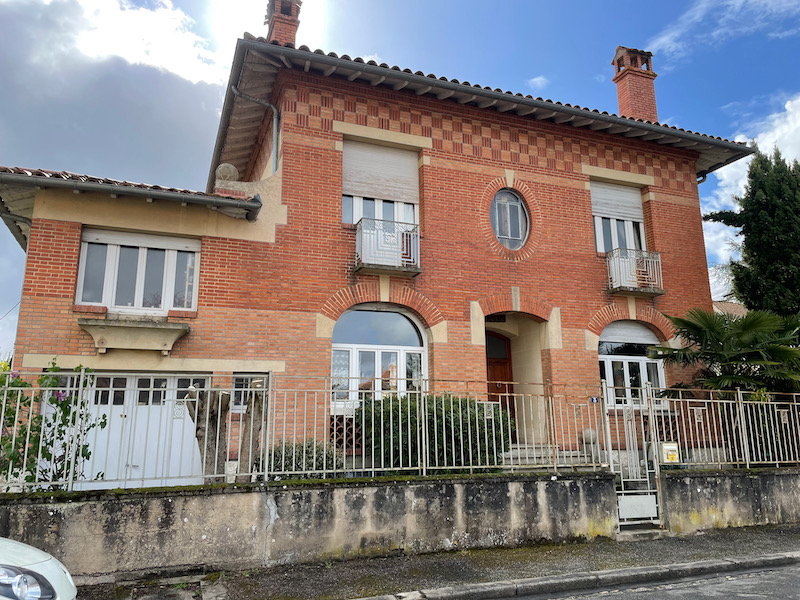
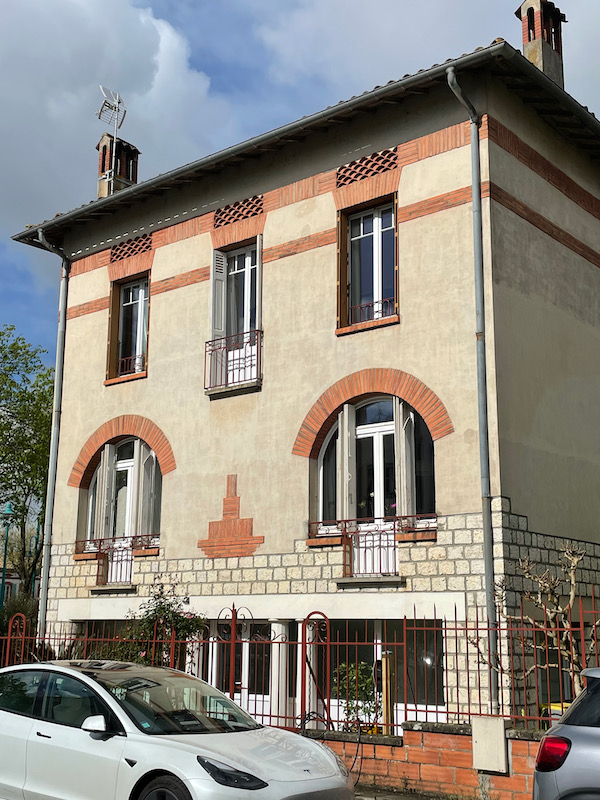
There is a side canal of the Garonne river here, which is an extension of the Canal du Midi that originates in Toulouse. You can see here that it has locks on it, similar to the Canal in Toulouse. The locks allow boats to move through the canal even though there is quite a bit of change in altitude between Toulouse and sea level at the Mediterranean. Between the locks, the canal is flat. A boat enters the lock and the doors close behind it. Then according to which direction it is traveling, the lock either fills or empties to reach the level of the next part of the canal. Once the level of water in the lock matches the level of the canal in front of the boat, the front doors open and the boat continues.
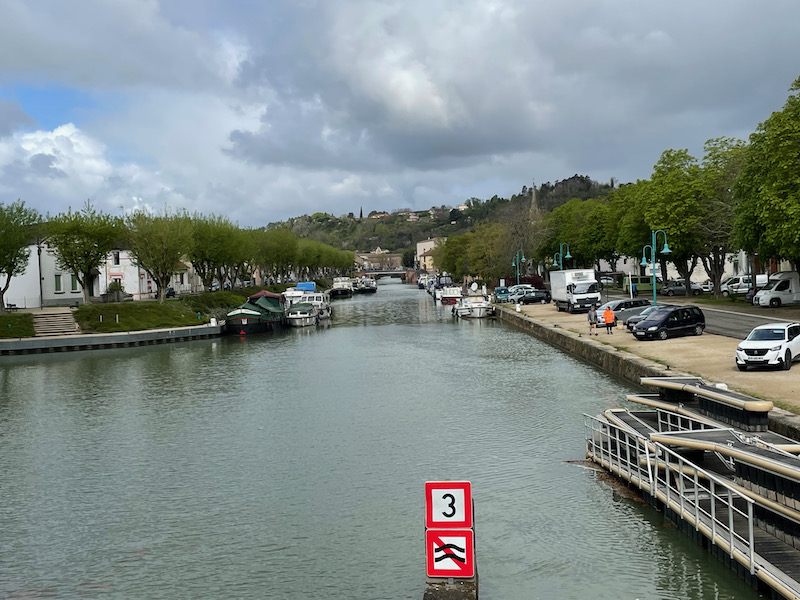
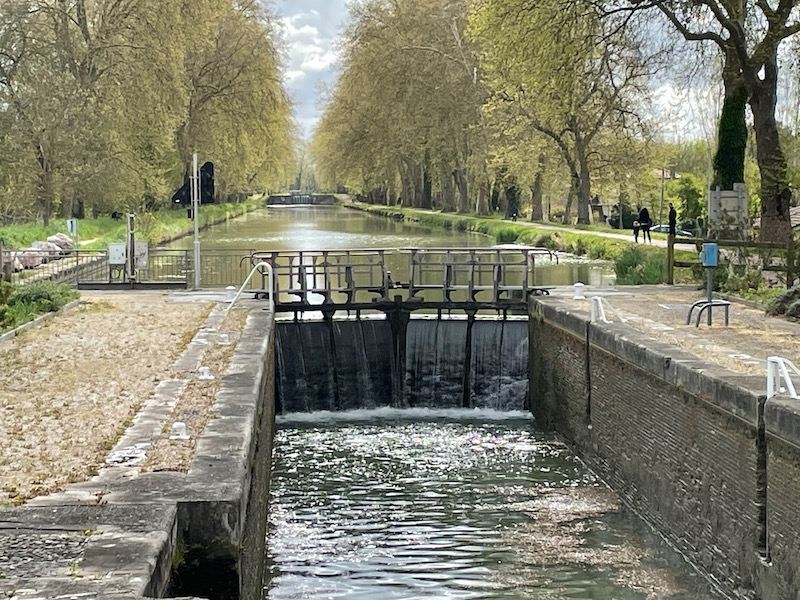
At the Tarn River, we caught a glimpse of the 9 arches of the Napoleon bridge. It was planned by Napoleon I but not finished until 1852 under Napoleon III.
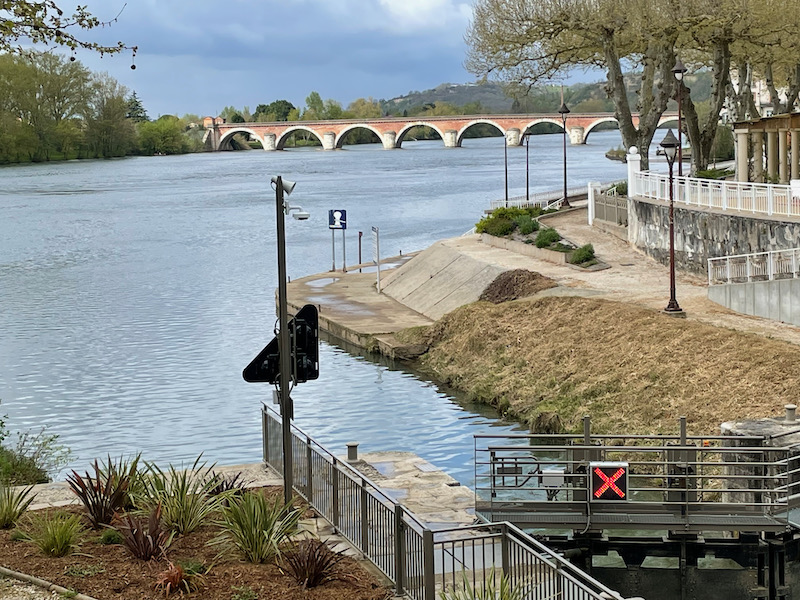

Near the bridge is an Uvarium, built in 1932 to accommodate followers of Chasselas cures. A uvarium is the place where someone tastes wines, grape juice, grapes, and possibly a place where they are sold. The "uval cure" was trendy in Switzerland, Germany and Italy during the second half of the 19th and at the beginning of the 20th century. People thought that eating gapes exclusively (for several days to several weeks) would eliminate toxins, increase tone, reduce fatigue, improve digestion, regulate cholesterol, and improve general health. Beneath the colorful frescoes on the ceiling, respecting a refined ritual, spa guests consumed 150 kg of grapes and 100 liters of grape juice per day in a season.
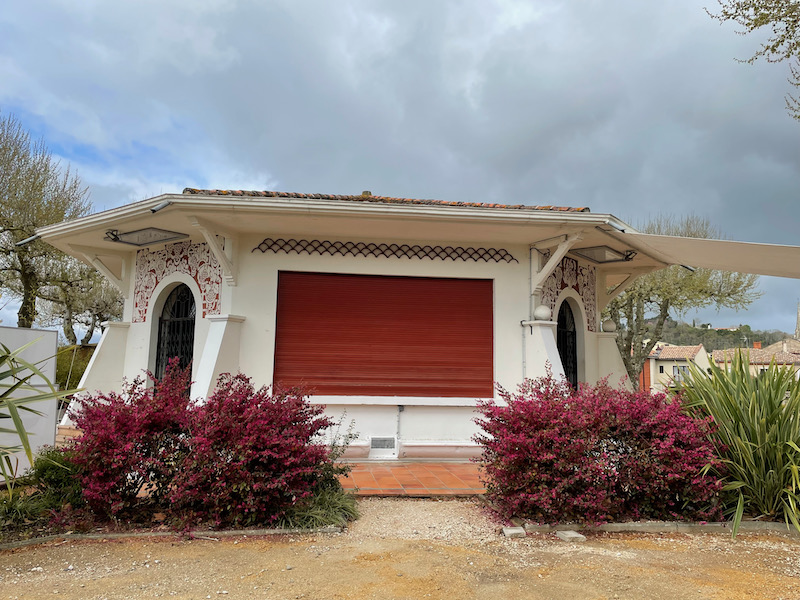

Lastly, the War memorial, sculpted in 1925. If you look at the top, the four sides tell the dramatic story of the Great War.
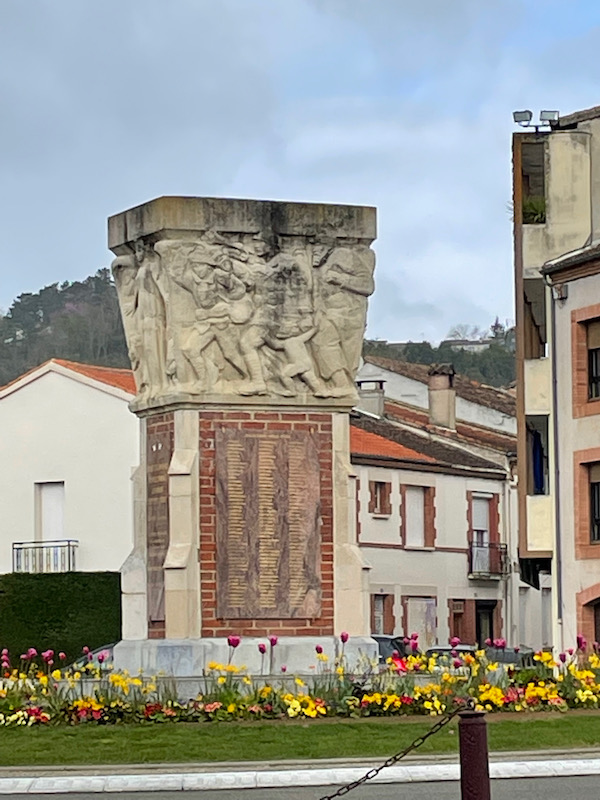
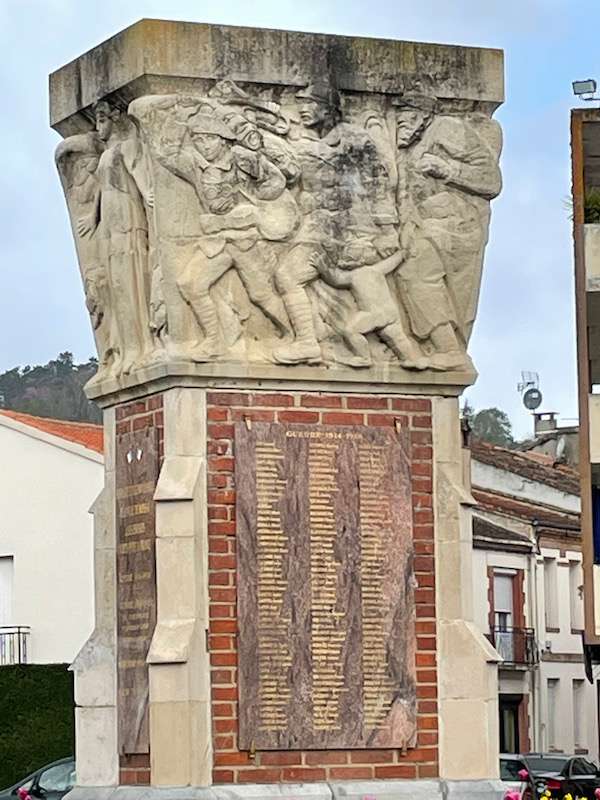
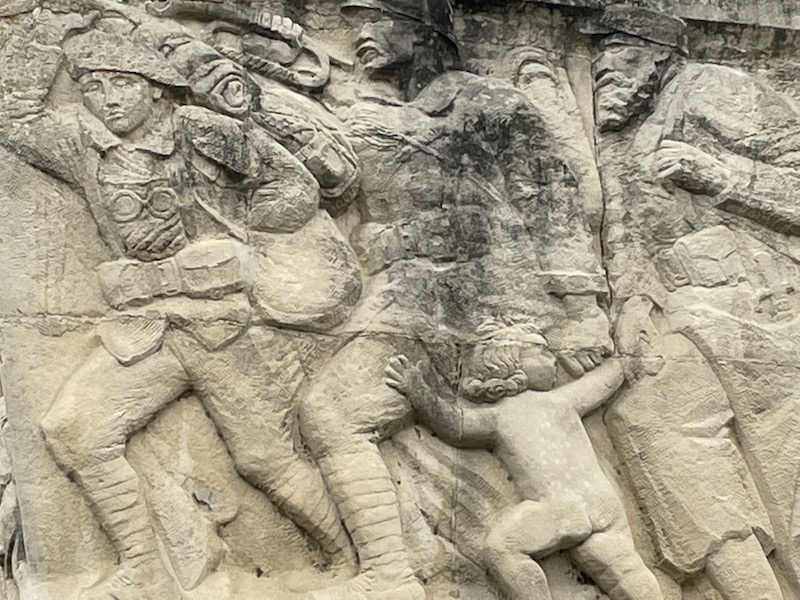
I had enough information/pictures of the Moissac Abbey that I broke it out into its own page, the Moissac Abbey blog.